Spain is full of wonderful destinations – particularly its capital city, Madrid. You’ll have no problem filling several days with all the great things to do in Madrid, but why stop there? If you allow an extra day or two in your Madrid itinerary, you can head out of the city and see what else Spain has to offer.
Madrid’s location near the middle of Spain makes it an ideal base for day trips. Head in nearly any direction and you’ll quickly find remarkable things to see in Spain outside of Madrid. To give you an idea of the possibilities, we’ve compiled this list of the best day trips from Madrid.
How to Get Around
Although you can make many of these day trips with public transport, consider renting a car for the day to give yourself more flexibility and independence. With your own four wheels, you control your time and schedule. Depending on how many people are in your group, renting a car might even work out to be cheaper than other forms of transportation. You can compare car rental deals and find the lowest prices at Rentalcars.com, an aggregation site that searches and displays prices and availability from hundreds of car rental companies, helping you find the best possible car for your budget.
Don’t want to drive or deal with the hassle of public transport? No worries! We’ve listed the best tour for each day trip (where available).
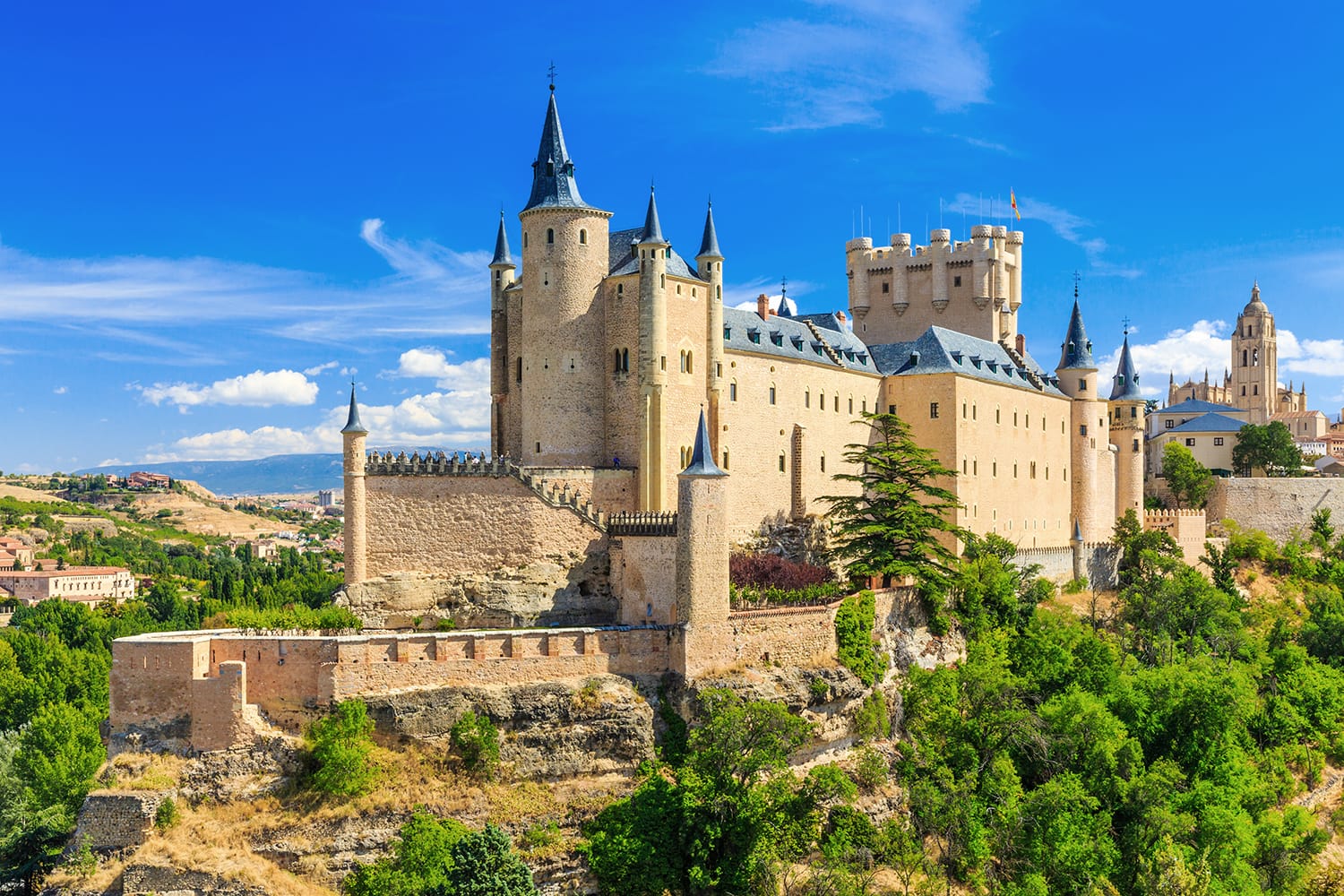
Segovia
One of the most popular Madrid day trips is to Segovia. Start your visit to this nearby city right in the center with the Roman Aqueduct of Segovia, a marvel of ancient engineering. This is also where you’ll find the Plaza del Azoguejo, a historic marketplace from which you can wander into meandering medieval streets. As you go, you’ll surely notice the impressive Gothic architecture of Segovia Cathedral, among other striking churches. For instance, find your way to the Jewish Quarter to see the former synagogue that is now the Corpus Christi Convent.
If you follow the ancient city walls, you’ll soon reach the Alcázar of Segovia, undeniably the highlight of the city. You can tour the castle’s rooms and enjoy superb views of Segovia and beyond from its tower.
Getting there: Segovia is particularly easy to reach from Madrid, with trains from the city center making the journey in under an hour. If you want to combine Segovia with other destinations, though, it’s best to look at full-day tours that include several stops.
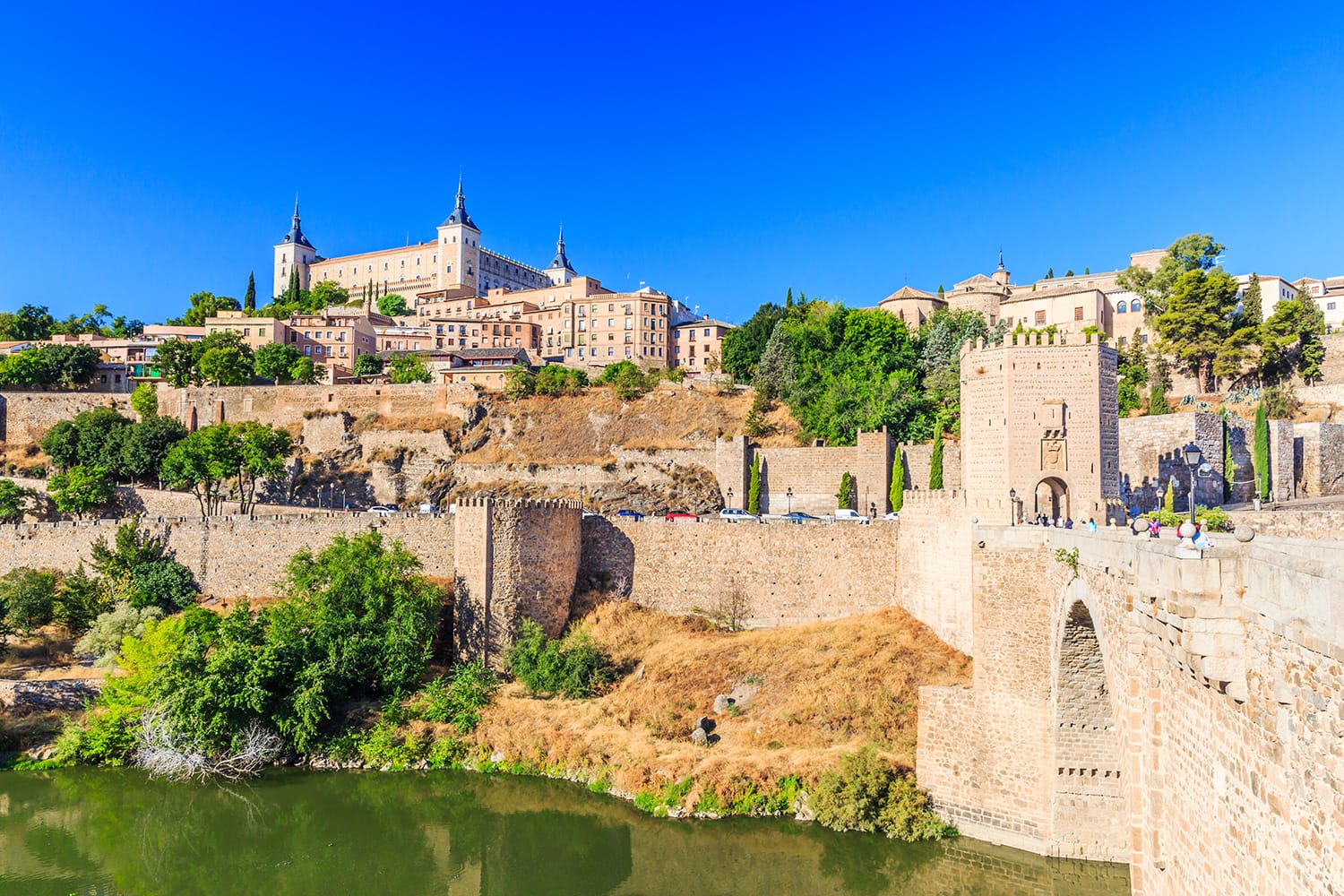
Toledo
Toledo is just a short trip from Madrid and a common recommendation for sightseeing beyond the capital, being known for its fascinating history and how the Christian, Jewish, and Arab communities have left their mark on the city.
Once you’re inside the city walls, you’ll see a web of narrow medieval streets sprawling in front of you. Head for Toledo Cathedral, whose 13th-century design reflects the city’s multicultural past. You’ll also see monasteries, synagogues, and churches that used to be synagogues scattered between Toledo’s many plazas. Of course, you also need to see the gigantic Alcázar of Toledo, once a royal palace and now a military museum.
Getting there: With hourly trains connecting Madrid to Toledo, the 30-minute journey couldn’t be easier. The only reason not to take the train is that a guided tour can also show you other places around Madrid, such as Segovia.
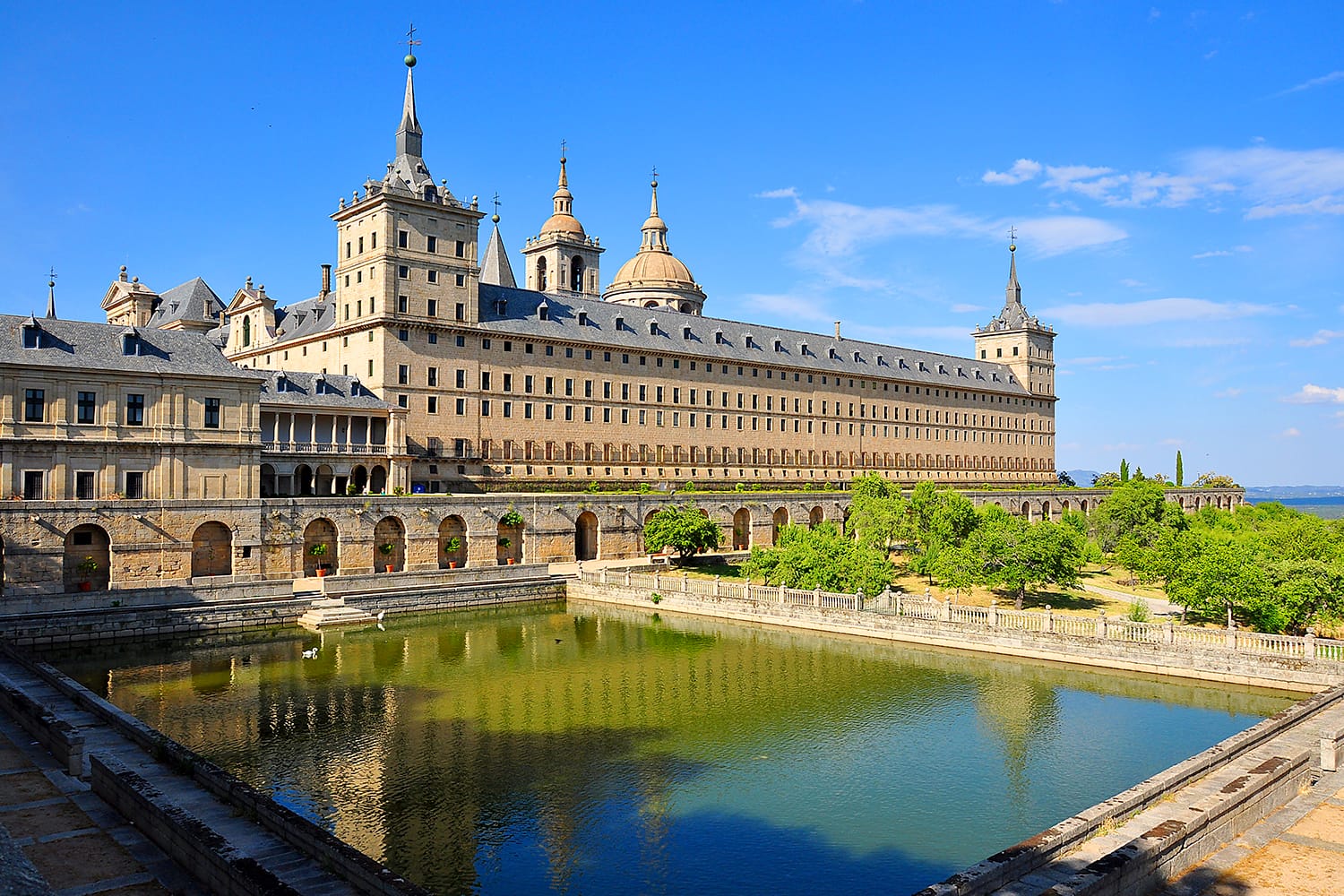
San Lorenzo de El Escorial
Spain is home to many world heritage sites, including one of great significance in San Lorenzo de El Escorial, a town not far from Madrid. The Royal Site of San Lorenzo de El Escorial (also known as the Monastery of El Escorial) is a huge complex that includes a royal residence, mausoleum, library, basilica, and memorial. Some highlights are the Pantheon of Kings (a chamber holding the remains of past kings and queens), the frescoes in the Hall of Battles, the beautiful Library of the Monastery, and the monastery’s Basílica de El Escorial.
The royal complex isn’t the town’s only historic site worth seeing, though. Visits to El Escorial often include a stop at the nearby Valley of the Fallen, where a basilica and a 150-meter-high cross honor those killed in the Spanish Civil War.
Getting there: A guided tour is the best way to understand the history and importance of the Monastery of El Escorial from a visit. However, you can also reach it from Madrid in an hour on the train, which leaves hourly from the city center.
Book Tour to San Lorenzo de El Escorial
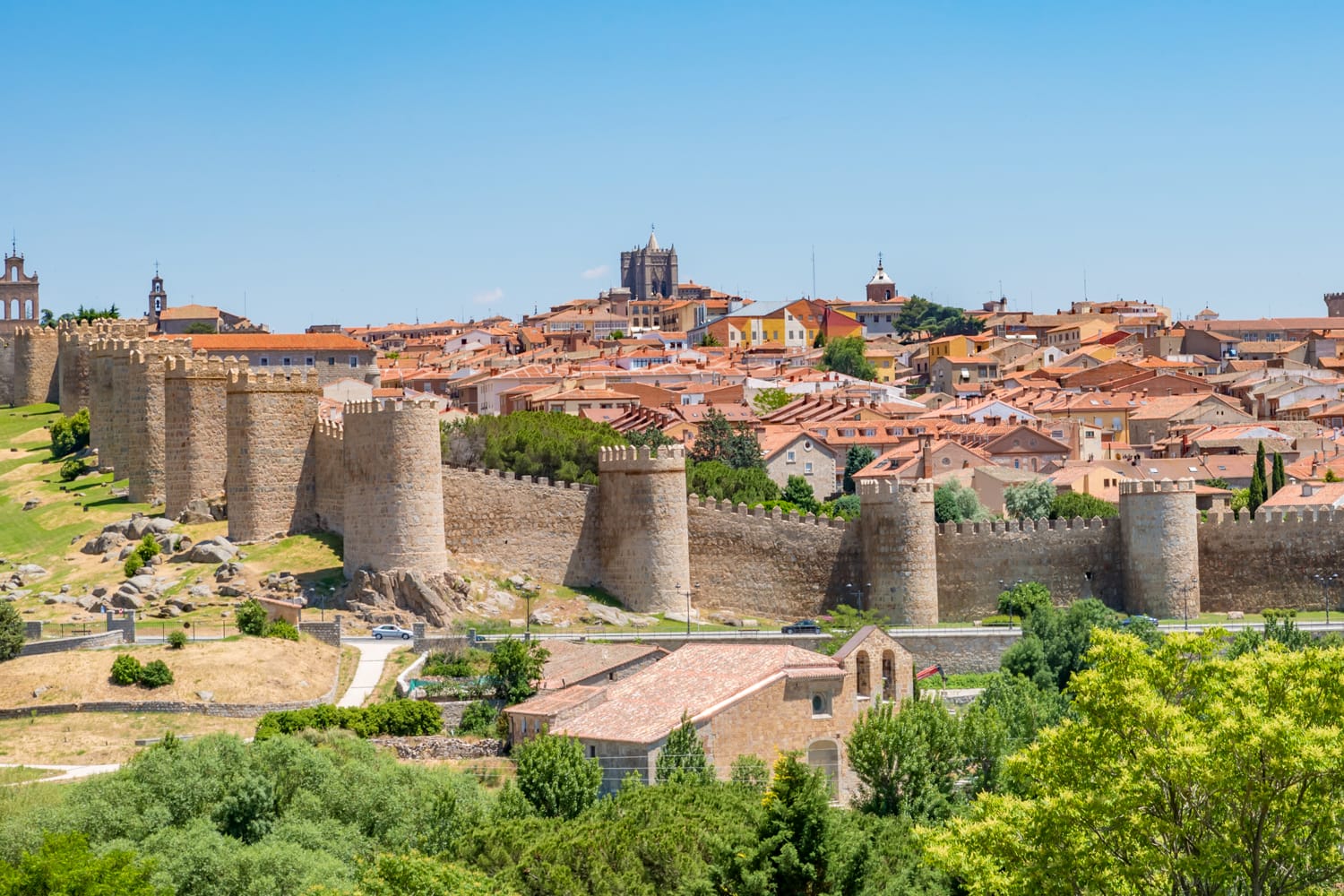
Ávila
With its pristine walls and preserved medieval character, Ávila is one of the best day tours from Madrid. While many Spanish cities and towns still have their medieval walls, few compare to the size of the fortifications surrounding Ávila, not to mention its 90 towers. You’ll want to get a good look at the Walls of Ávila from outside the city and then walk along one of the open sections.
Also explore behind the walls, starting with the formidable Ávila Cathedral from the 12th century. You’ll notice many other churches, monasteries, and convents, such as the Convent of Santa Teresa and the Basilica of San Vicente. Be sure to stop at the Plaza Mercado Chico, the historic town square surrounded by stone archways.
Getting there: It takes two hours to get from Madrid to Ávila by train. You can also visit on an organized tour to get there quicker and include nearby destinations such as Segovia.
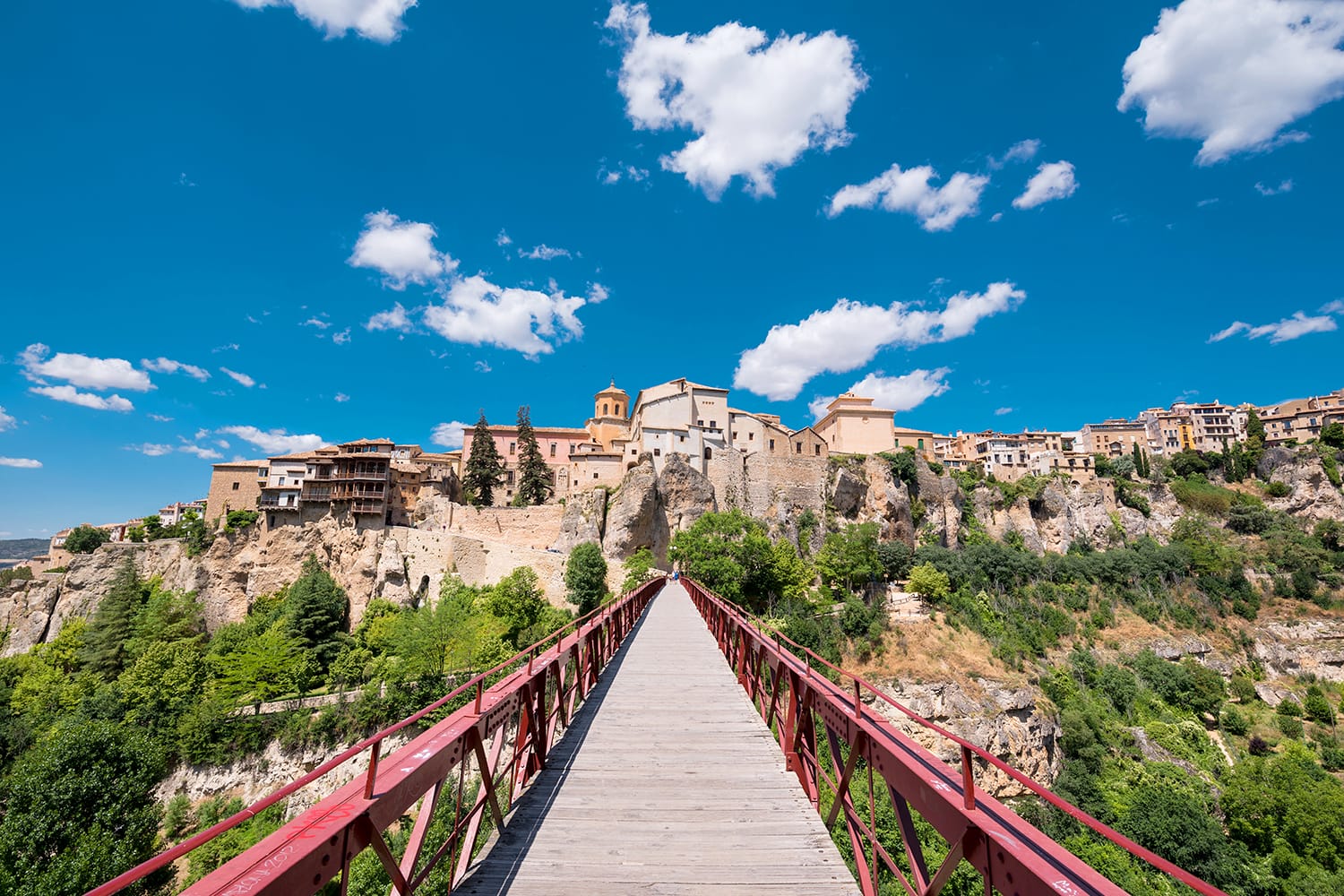
Cuenca
Another easy train trip from Madrid is to the scenic city of Cuenca. Built by the Moors upon a dramatic landscape in the mountains, the town combines bountiful history with stunning scenery. Begin your visit at the Plaza Mayor in the historic city center, with the beautifully Gothic Cuenca Cathedral standing before you.
Farther into town, you’ll come across Cuenca’s famous hanging houses, the Casas Colgadas. These traditional homes sit boldly along cliffs over the Huécar river gorge. To see them properly, walk out onto the old San Pablo Bridge that spans the gorge. For the classic view of Cuenca, walk onward to the Mirador Barrio del Castillo.
Getting there: Regular trains make the one-hour journey from Madrid to Cuenca. If you want to learn more about Cuenca, though, take a guided tour to hear about the history of the city’s famous sites.
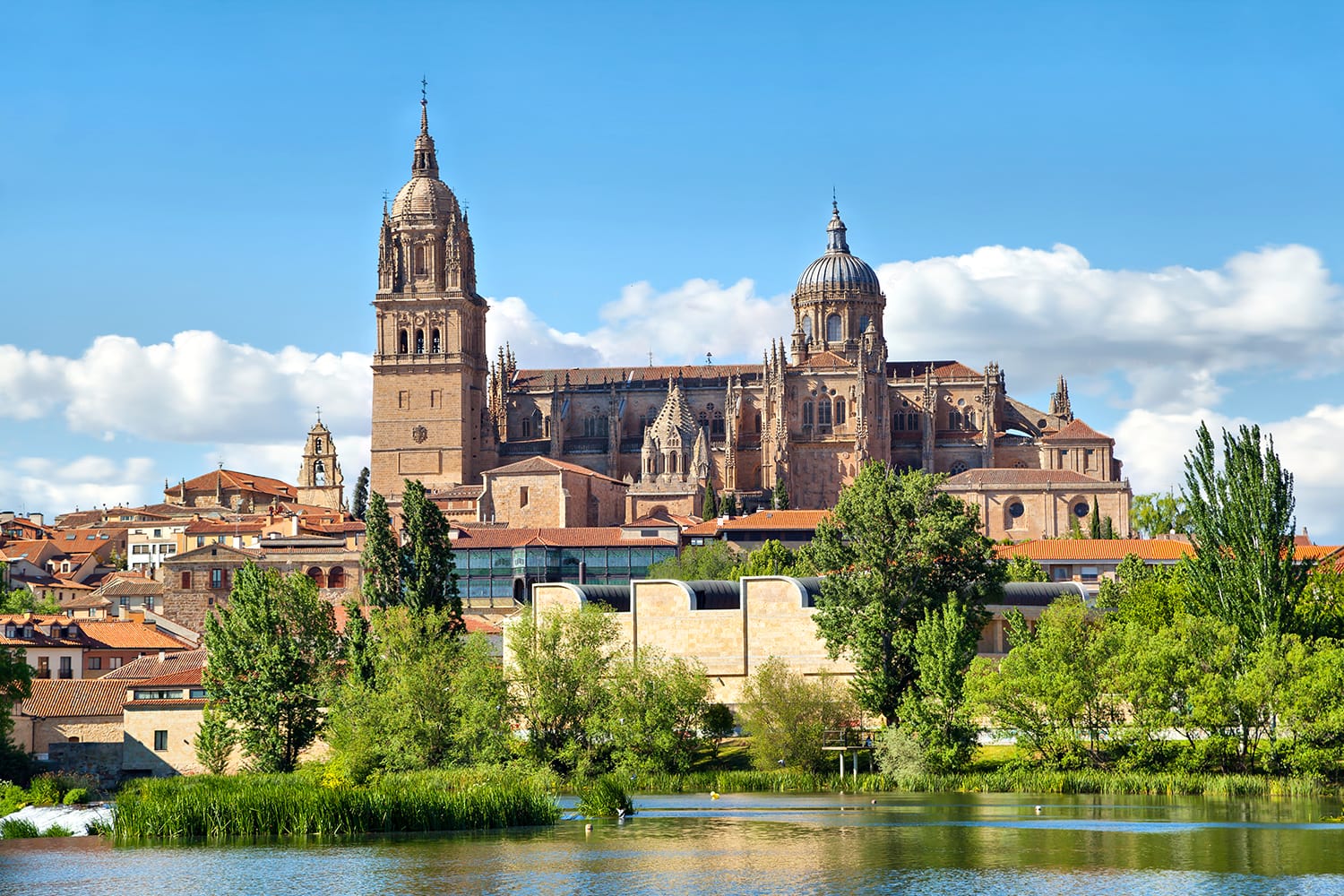
Salamanca
With its distinctive architecture and proud university tradition, the city of Salamanca is surely one of the best places to visit from Madrid. Begin your visit by heading straight for the Plaza Mayor, the main square and home of the regal Salamanca City Hall. The square is also lined with arcades and balconies that host shops, cafes, and restaurants.
Next, venture through the Old Town to see two ornate churches in one – the Old Cathedral and New Cathedral of Salamanca. Also make sure to see the Casa de las Conchas, a 16th-century palace with seashell patterns across its facade. Even more ornate is the entryway to the Convent of San Esteban, a Dominican monastery in the Plaza del Concilio de Trento (Council of Trent Square). For great views, visit the church of La Clerecía to climb the Scala Coeli (a “stairway to heaven”) or cross the Roman Bridge and look back to the city.
Getting there: Both buses and trains depart from Madrid for Salamanca every hour, making the trip in a little under three hours. There are also a few day tours that combine a trip to Salamanca and Ávila.
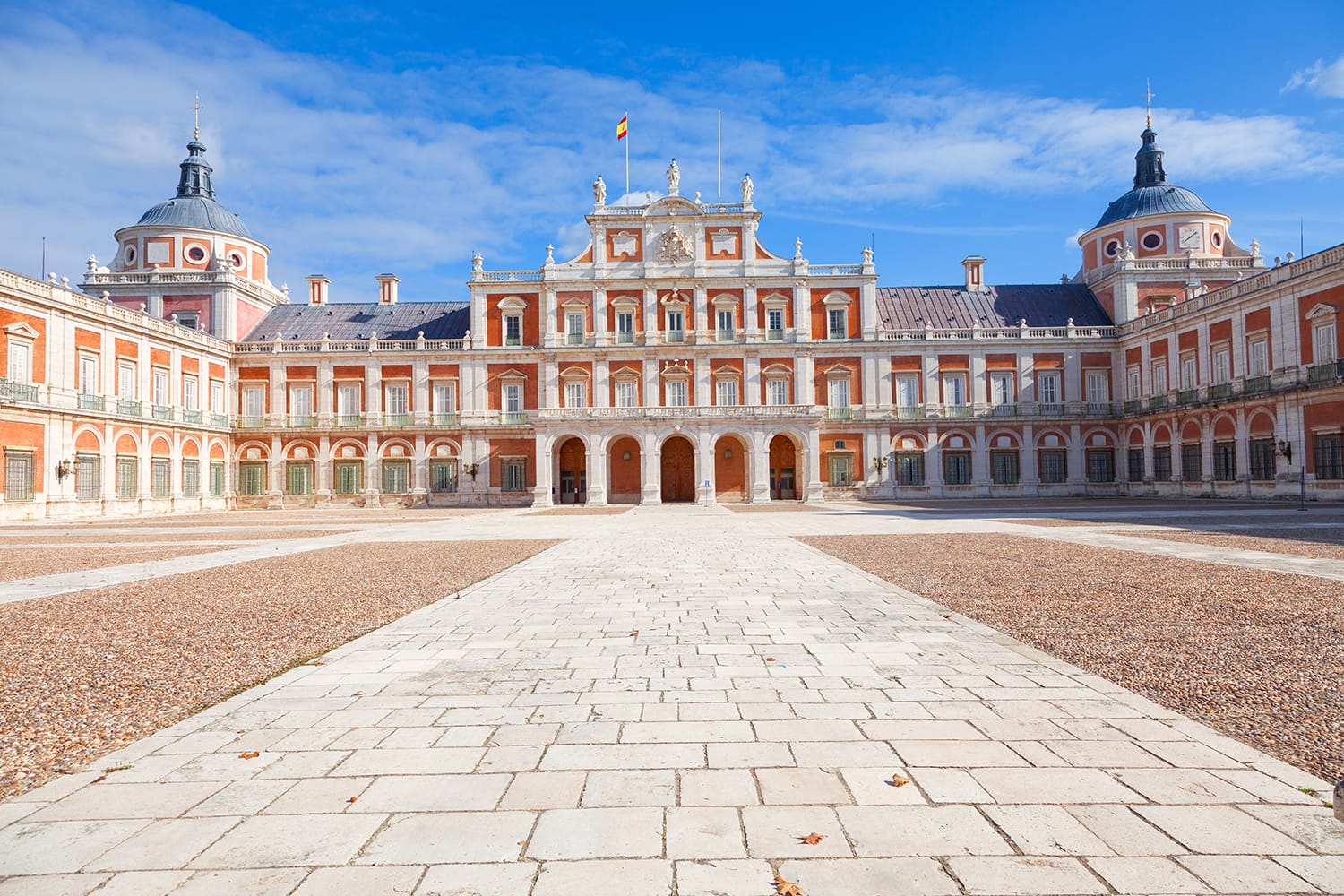
Aranjuez
As a royal resort town, Aranjuez offers a taste of the resplendent and is one of the best side trips from Madrid. The main landmark is the Royal Palace of Aranjuez, an estate for the Spanish royal family since 1560. Heavily inspired by French design, the palace decor mixes various styles to create a lavish interior you’ll definitely want to see.
Most of the town’s other tourist sites are pretty gardens and stately residences. The main gardens are the Jardín de la Isla (Garden of the Island), featuring beautiful fountains and woodland walkways, and the vast Jardín del Principe (Prince’s Garden). This is where you’ll find the Casa del Labrador, another gorgeous royal home. Even the Aranjuez Train Station is elegantly designed in the Moorish architectural style.
Getting there: Trains leave Madrid for Aranjuez every 30 minutes, and the journey lasts 50 minutes. However, if you’d prefer to have someone show you around and ensure a stress-free trip, a guided half-day tour is the way to go.
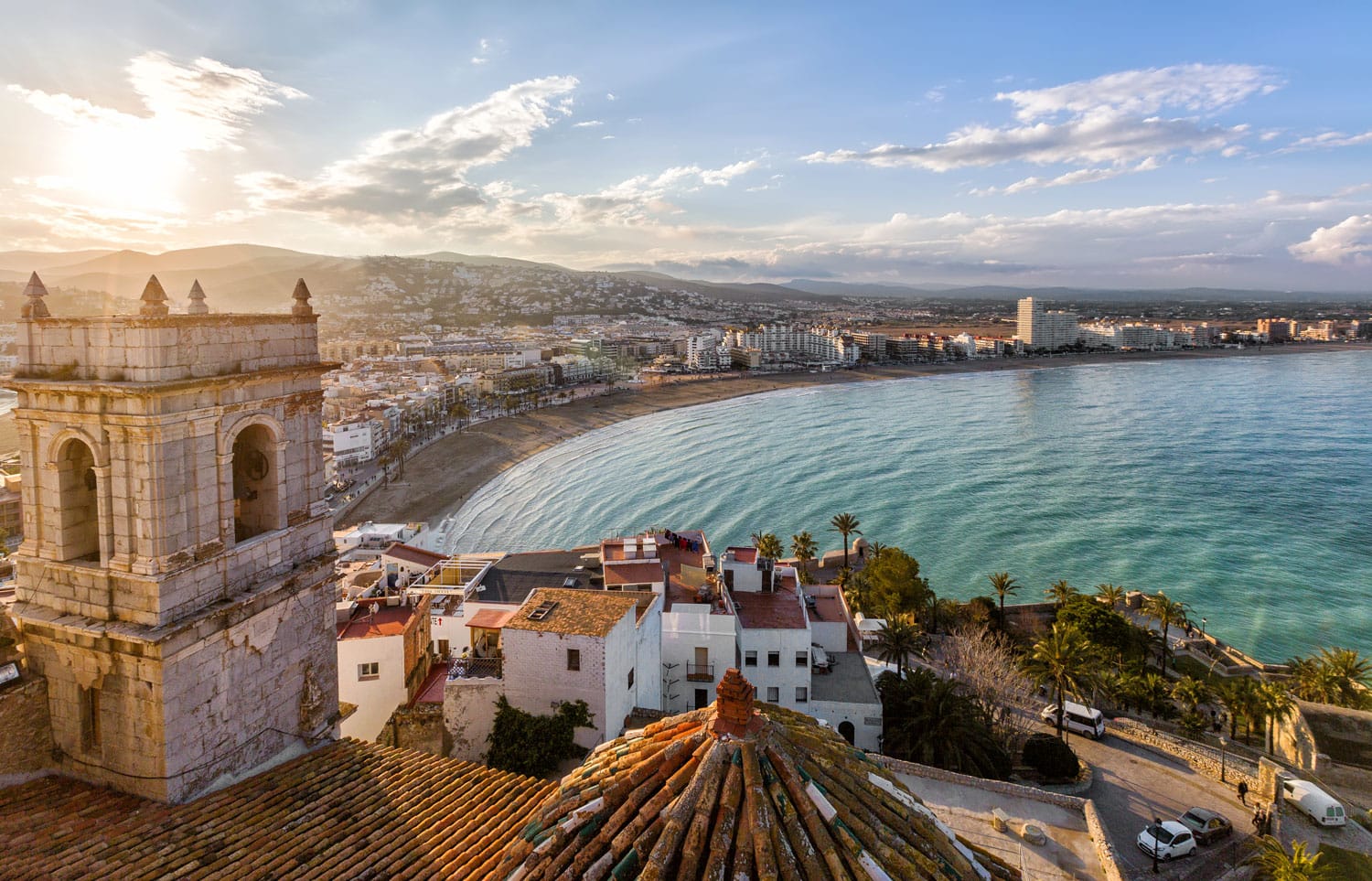
Valencia
You can’t pass up an opportunity to visit Valencia, the third-largest city and one of the best places to visit in Spain. Start by heading straight for the striking Plaza de la Reina in the city center. From here, you can easily find the elegant Valencia Cathedral, said to house the actual Holy Grail. Elsewhere in the historic center, you can admire the architecture of the Lonja de la Seda – a palatial civil building listed as a UNESCO World Heritage Site for its Gothic design – or take in the flavors and scents of the Central Market.
Next, take a stroll in the bohemian neighborhood of El Carmen and enjoy some delicious Valencian paella. To see a much more modern side of Valencia, venture through the relaxing Turia Gardens to the City of Arts and Sciences, a futuristic complex that includes the L’Oceanogràfic aquarium and the Hemisfèric planetarium.
Getting there: You can reach Valencia from Madrid in an hour and 40 minutes on the regular high-speed train. This is the best way to go, as any alternative involves a lot more travel time.
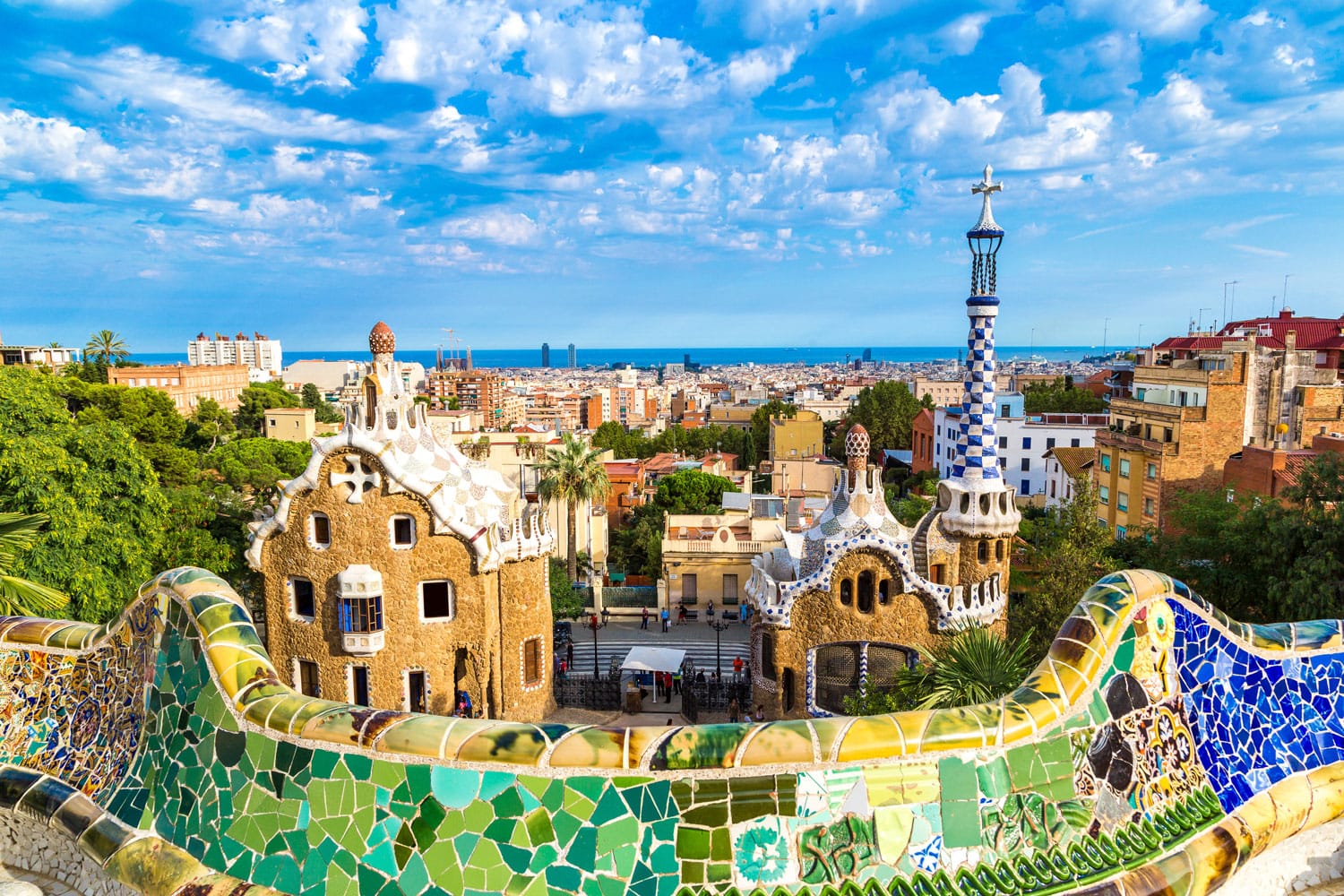
Barcelona
Although it’s not ideal to see Barcelona as just a day trip, that doesn’t mean it isn’t possible. With no time to waste, head straight for La Sagrada Família, the city’s famously unfinished church. Once you’ve seen the incredible interior of this masterpiece, venture north to Park Güell, which shows off more classic buildings designed by renowned architect Antoni Gaudí.
Back in the downtown area, stop to appreciate two more Gaudí buildings – Casa Batlló and Casa Milà (or La Pedrera) – before strolling down the leafy boulevard of La Rambla. This will take you to the Gothic Quarter, where you’ll find the Cathedral of Barcelona, Bridge of Sighs, and Boquería Market. If you have time, stop at the Picasso Museum or Güell Palace before ending your visit at the beaches of La Barceloneta.
Getting there: Even with a high-speed train, the journey from Madrid to Barcelona takes close to three hours. This is the only way to reach Barcelona and still have time for sightseeing, so start early.
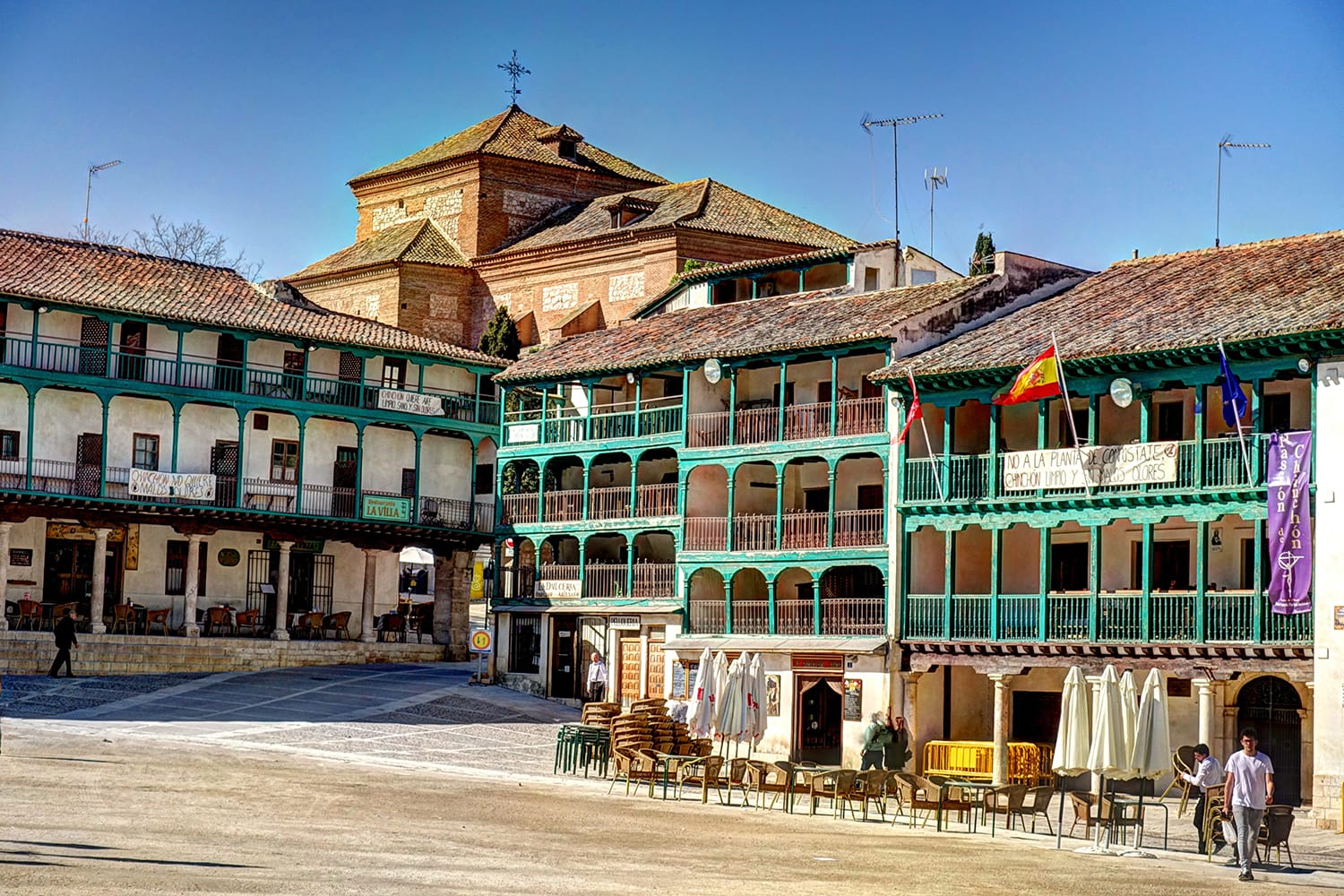
Chinchón
If you’d like to experience a traditional Spanish town for your day trip, Chinchón is the perfect fit. This old town in the classic Spanish countryside gives the sense that you’ve been transported back hundreds of years. The Plaza Mayor (the main square) is the most important site here, beautifully lined with arcades, wooden balconies, and 16th- and 17th-century houses. The square has been used for various films over the years and hosts the town’s bullfighting ring each October.
Other landmarks include the 14th-century Clock Tower, which once belonged to a local church, and the remains of Chinchón Castle south of town. Otherwise, Chinchón is best known for its local wines and traditional cuisine, so give both a try while visiting!
Getting there: With no train station in Chinchón, the best way to reach it is by bus. Leaving more than once an hour from the Conde de Casal stop in the center of Madrid, the bus makes the trip in around 45 minutes.
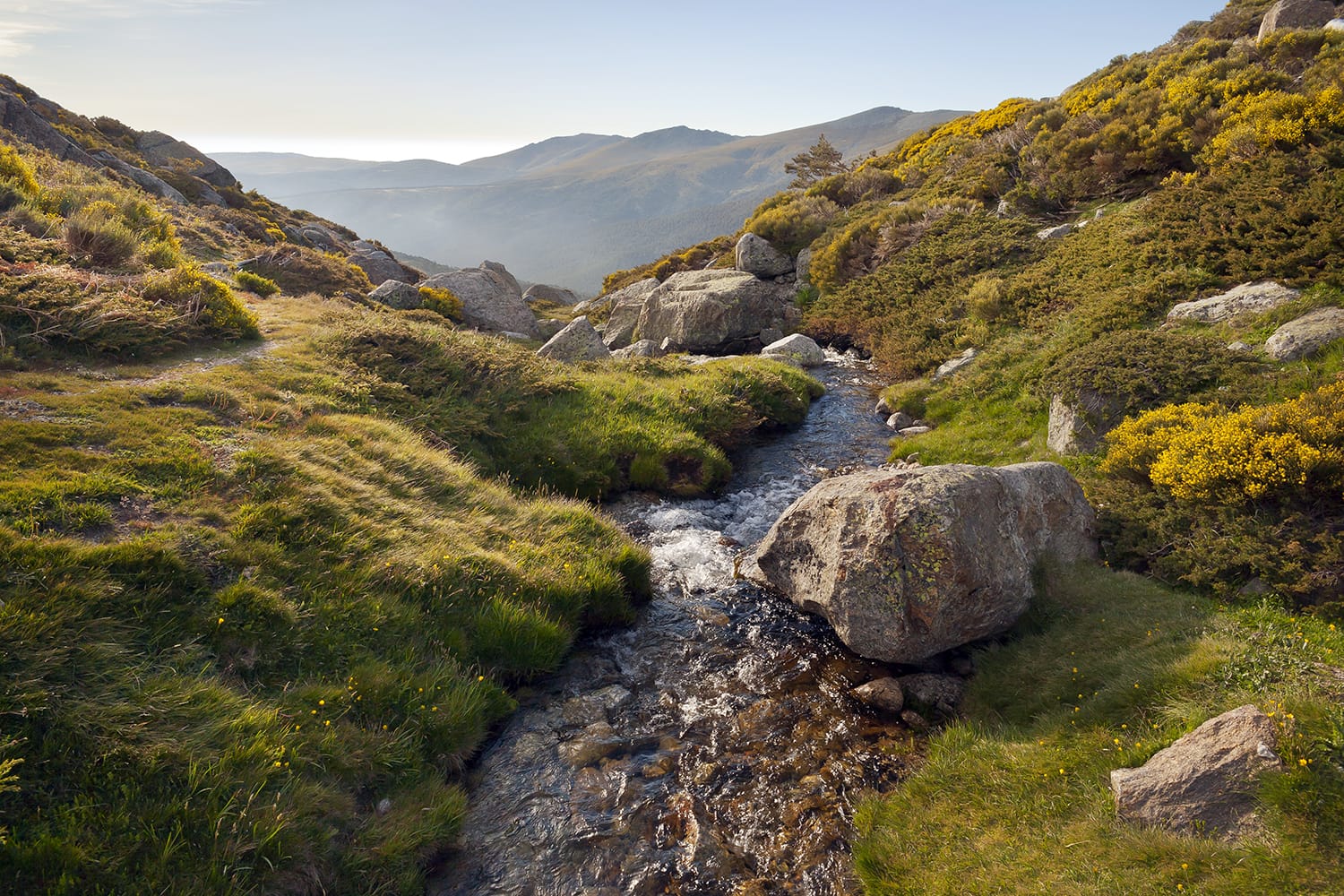
Sierra de Guadarrama
Not every day trip from Madrid has to be to a city or town, especially with the Sierra de Guadarrama National Park nearby. If you love the outdoors, this mountain range north of Madrid is the ideal day trip for you.
You can either go skiing or hiking (depending on when you visit) to enjoy the majestic mountain scenery. If you can, head up to the summit of the range’s highest mountain, Peñalara, to see the surrounding meadows and glacial lakes. Keep an eye out for cool wildlife, including deer, wild boar, Spanish ibex, and birds of prey.
Getting there: It’s best to visit the Sierra de Guadarrama National Park with an organized tour and be taken around by someone who knows the area. To get there independently, take the 691 bus from Madrid to the park’s Puerto de los Cotos entrance near the information center.
Book Tour to Sierra de Guadarrama

Consuegra
When you think of Spain, do you picture isolated small towns in a dry landscape with the occasional vineyard? That’s essentially the town of Consuegra in the La Mancha region south of Madrid. This part of Spain is best known for the descriptions of it in the famous novel Don Quixote.
Besides the classically rugged landscape, the main sights here are the traditional windmills and castle. The Molinos de Viento de Consuegra sit together in a row, with five of these 12 windmills from the 19th century still operating to this day. Nearby is the 10th-century Castillo de Consuegra and its imposing keep.
Getting there: If you take a train from Madrid to Toledo and then the hourly bus to Consuegra, you should make it there within three hours. There are currently no organized tours, though options are likely to spring up as the town becomes better known.
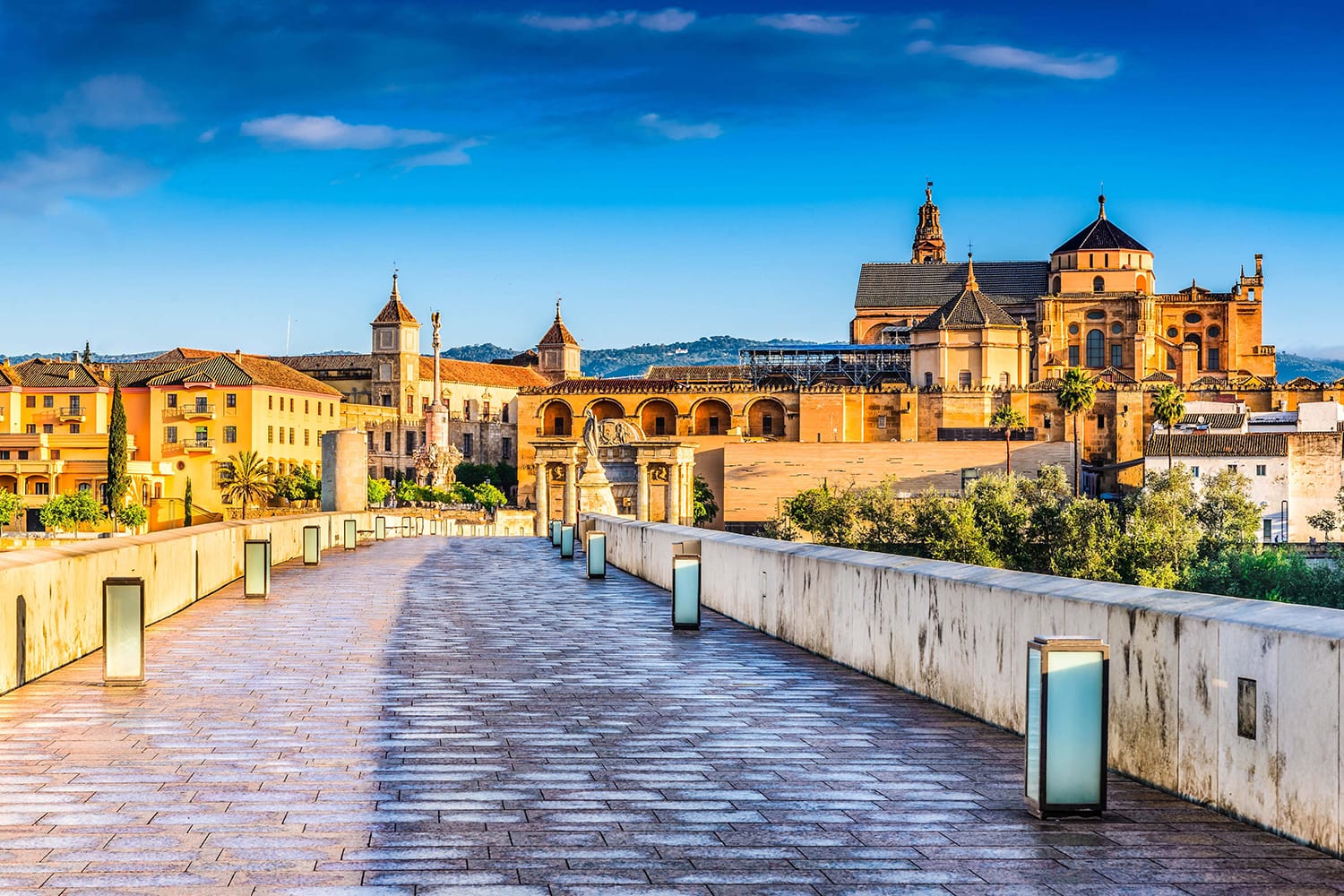
Córdoba
The ancient city of Córdoba is your best option to get a taste of the Andalusia region during your stay in Madrid. First, head down to the Roman Bridge over the Guadalquivir to admire the ancient structure and get a superb view of the city you’re about to explore. Next, pass through the Puerta del Puente, a monumental Renaissance gate, and make your way to the Alcázar de los Reyes Cristianos. This medieval palace boasts pristine garden terraces, Roman mosaics, and more fabulous city views.
After you wander the narrow streets of the Old Town, appreciating the whitewashed Andalusian houses, it’s time for the city’s most iconic landmark, the Mosque-Cathedral of Córdoba. Also known as the Mezquita and the Cathedral of Our Lady of the Assumption, this wonderful mosque-turned-cathedral is best known for its spellbinding hall of striped archways.
Getting there: The only way to reach Córdoba from Madrid and have enough time for sightseeing is by high-speed train. The train leaves frequently and makes the journey in roughly two hours.
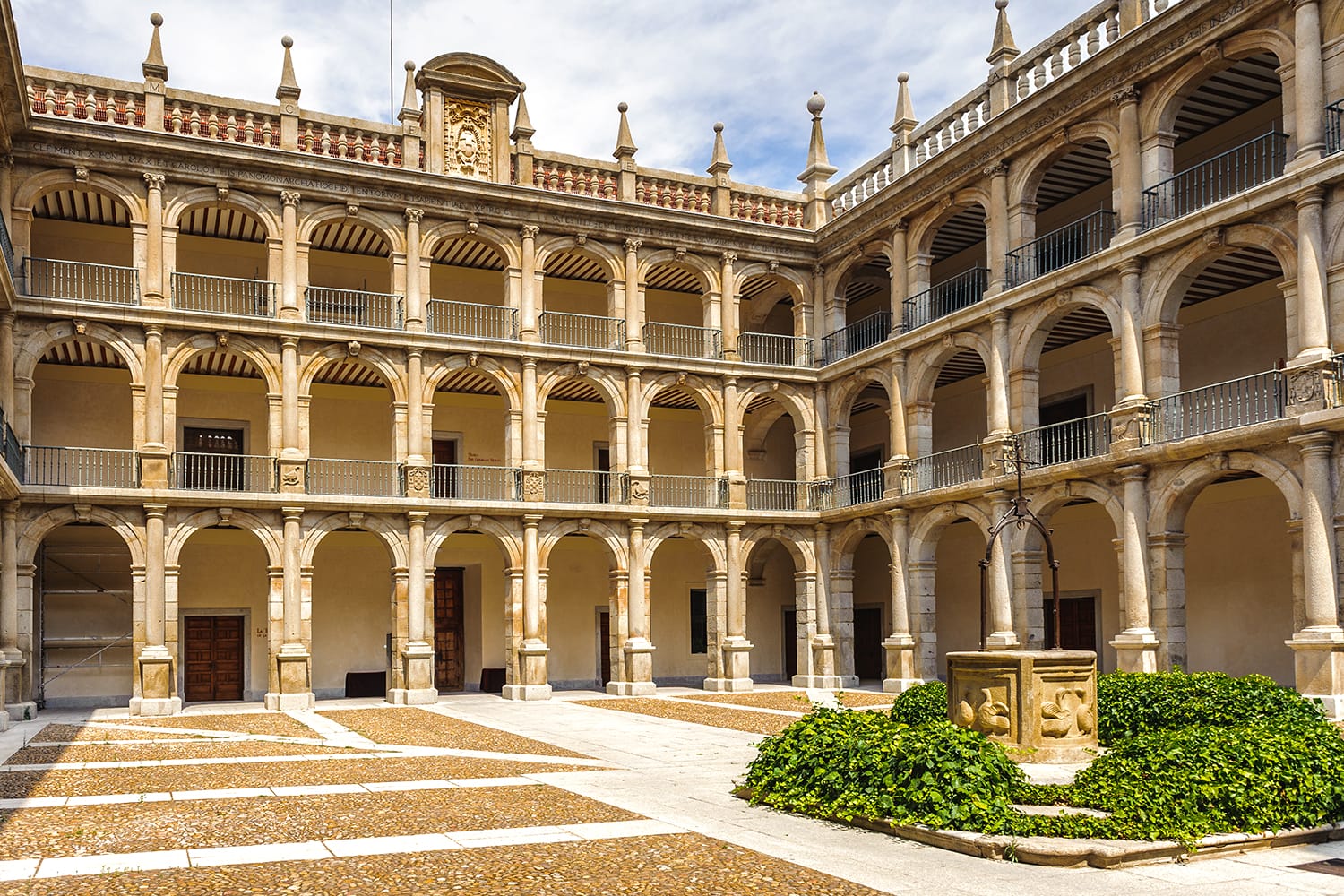
Alcalá de Henares
One of Spain’s most prestigious universities is in Alcalá de Henares, a city just outside Madrid. With a history dating back to 1293, the University of Alcalá boasts some seriously impressive historic buildings. Alcalá is also known for being the birthplace of Miguel de Cervantes, author of Don Quixote. You can learn about his life at the museum within his birthplace home, Casa de Cervantes.
In the historic city center, you can see remnants of Spain’s Golden Age on streets like Calle Mayor and in the Alcalá de Henares Cathedral. But the best thing here may well be the food scene. Don’t leave Alcalá without trying its large tapas plates at a restaurant like Indalo.
Getting there: Alcalá de Henares is only a 30-minute train ride from Madrid, with departures every 10 minutes.
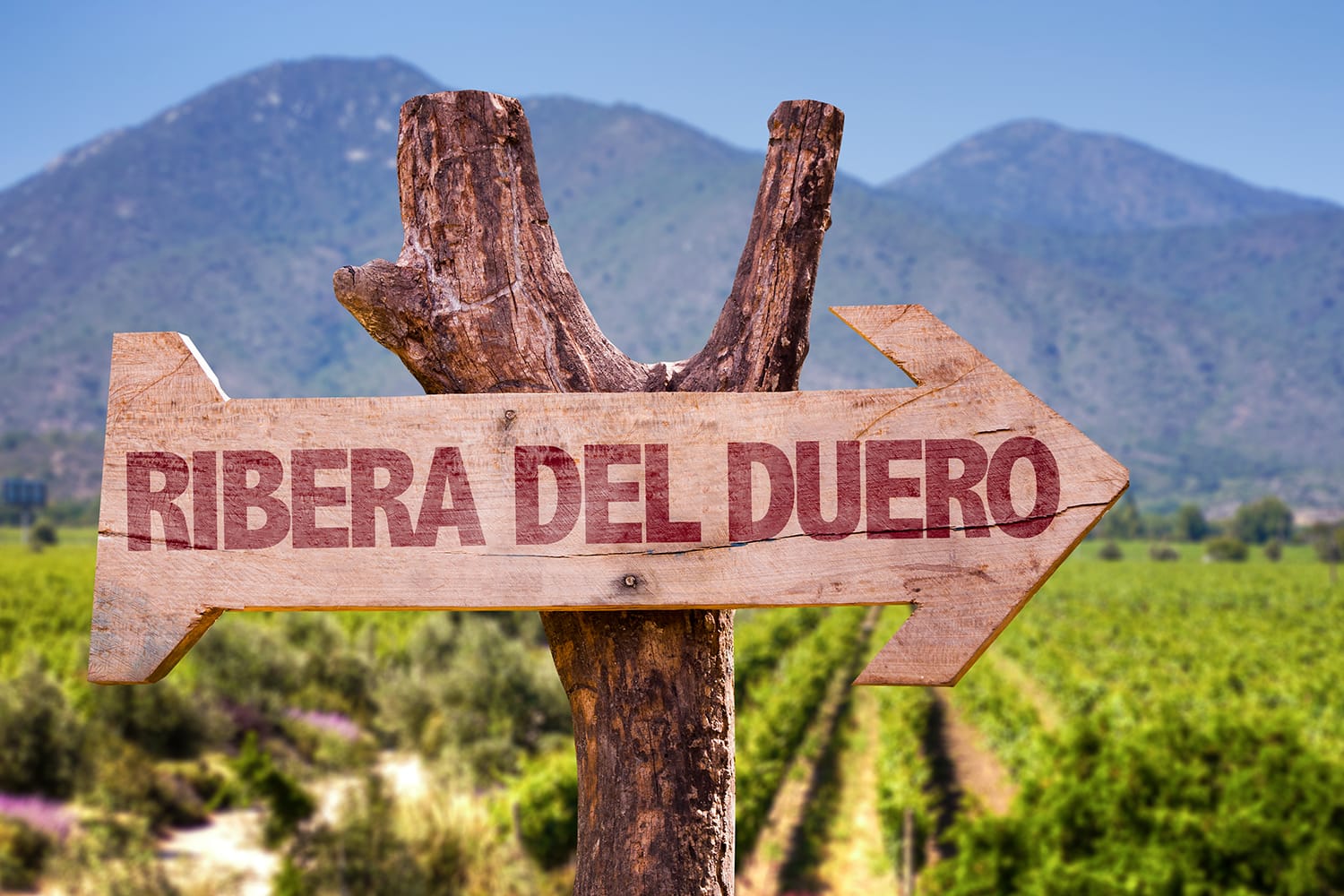
Ribera del Duero
If spending your day among vineyards sounds like heaven, you should definitely head north of Madrid to the Ribera del Duero district in the Douro Valley. Many wineries have long operated in this part of Spain, thanks to its geography and climate.
On a tour of the Ribera del Duero, you can visit several vineyards and sample some of their finest creations. You’ll also learn a little about regional winemaking techniques and the trade’s local history. You’re sure to catch some beautiful scenery from the twisting river landscape as well.
Getting there: While you can take a two-hour bus ride from Madrid to Aranda de Duero (the main town in the valley), you then have no way to get from one vineyard to the next. You won’t have that problem with a wine tour taking you through the region, which allows you to relax and drink.
No matter what activities interest you, you certainly won’t be strapped for ideas in this magical part of Spain. The hard part now is narrowing down the best day trips from Madrid to just one or two!
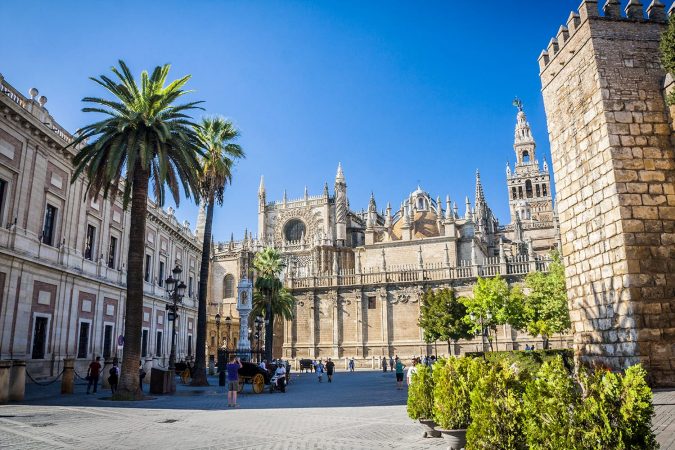

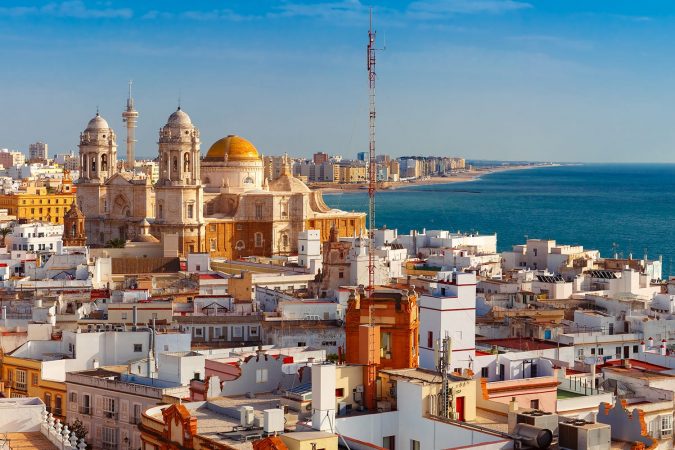
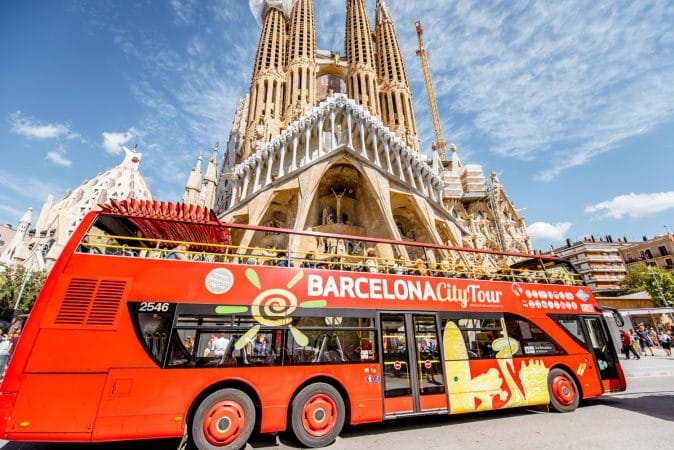
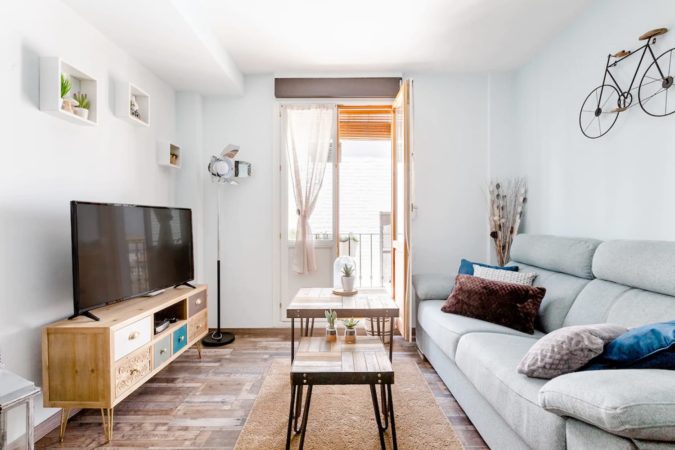


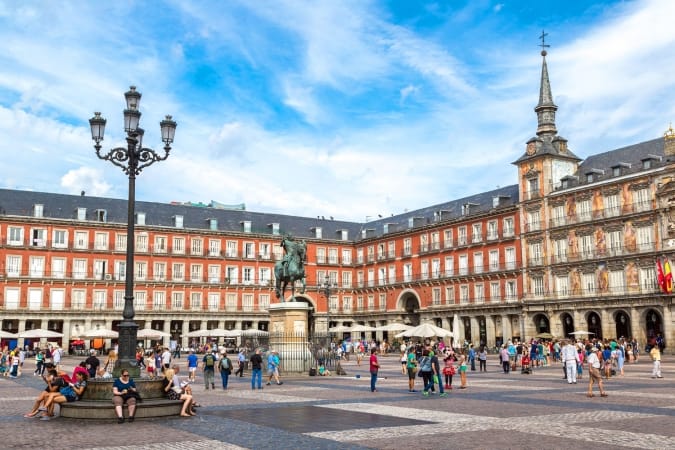
Comments